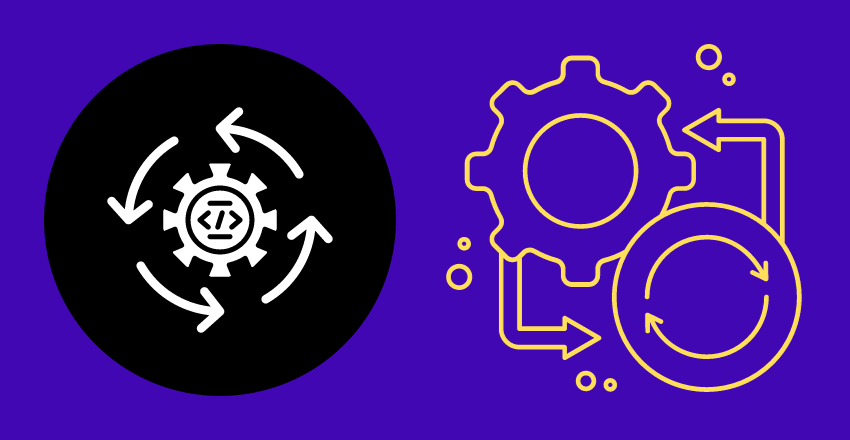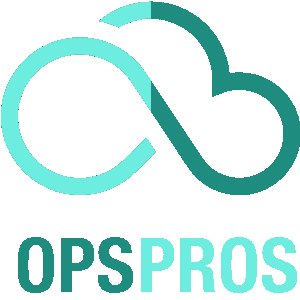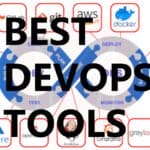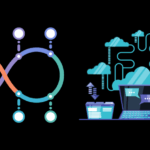
Continuous Integration (CI) revolutionizes your development pipeline, catching errors early for smoother deployments. Elevate code quality and team collaboration today.
In today’s dynamic software development world, streamlining the development process and enhancing team efficiency have become paramount. Continuous Integration, a practice that has gained significant popularity, has transformed the way software is developed and deployed.
By continuously integrating code, developers can catch errors early and speed up the development process. In this article, we explore the concept of CI, its benefits, and how it can enhance the software development process.
Key Takeaways
- CI is a popular practice in software development that involves continuously integrating code to catch errors early in the development process.
- Continuous Integration can streamline the software development process and improve team efficiency.
What is Continuous Integration?
CI is a software engineering approach that involves integrating code continuously into the main branch of a code repository. This practice is part of the larger CI/CD (continuous integration/continuous delivery) process and is crucial for agile software development teams. CI aims to minimize errors in the software development process by identifying and fixing issues as early as possible.
The process of CI nvolves developers integrating their code changes frequently, which triggers automated builds and tests to ensure that the changes do not cause issues for the rest of the codebase. Automated testing is an integral part of continuous integration and detects issues quickly, allowing developers to solve them efficiently. By integrating code continuously, teams can quickly identify and solve issues, allowing them to deliver high-quality software faster and more efficiently.
Key Benefits of Continuous Integration

CI offers numerous benefits ideal for streamlining your process and improving team efficiency when it comes to software development. Below are some of the key benefits:
- Reduces Integration Issues: By integrating code regularly, developer teams can quickly identify and fix bugs, ensuring that code is always in a releasable state.
- Enhances Quality Control: With continuous integration, each integration is tested, and any issues are promptly addressed. This helps to identify issues and fix them sooner, reducing the risk of bugs and errors.
- Improves Team Communication: Continuous integration encourages collaboration between developers, testers, and other stakeholders. This ensures seamless communication and better teamwork in the development process.
- Speeds Up Delivery: The automation of tasks in continuous integration expedites the development process and increases efficiency, allowing quicker delivery of the software.
- Ensures Rapid Feedback: Continuous integration provides rapid feedback, indicating problems that need resolution. This enables developers to act quickly and resolve issues, reducing the risk of wasted efforts.
Overall, the benefits of continuous integration are essential for streamlining your process, improving team efficiency, and enhancing quality control in software development.
Essential Components of Continuous Integration
CI heavily relies on the use of various tools and software applications that streamline the process. These components include:
- Version control system – This tool tracks and manages changes made to code. It enables developers to collaborate and work on a project simultaneously.
- Build server – The build server automates the process of compiling, testing, and packaging code changes made by the developers.
- Automated testing tools – These tools help ensure the quality and stability of the code changes before they are integrated into the main codebase.
- Deployment automation tool – This tool enables the automatic deployment of the code changes to the production environment.
- Continuous integration tool (CI server) – This serves as the central hub that integrates all the tools mentioned above. It automates the entire continuous integration process.
Effective integration of these components will reduce the time and effort required to develop high-quality software, ensuring the overall success of the project.
Common Challenges in Continuous Integration

CI is an essential process in software development that comes with its own set of challenges. Here are some of the most common challenges that teams face when implementing continuous integration:
- 1. Integration issues – When different developers are working on different parts of the code, integrating them can be a complex and time-consuming process.
- 2. Build failures – Build failures occur when the code is unable to pass automated tests. These failures can disrupt the entire development process.
- 3. Technical debt – Technical debt occurs when developers have to make shortcuts or quick fixes to meet project deadlines. This can lead to poor code quality.
- 4. Lack of expertise – Continuous integration requires specialized knowledge and skills that team members may not have, leading to errors and inefficiencies.
While these challenges can be frustrating, there are steps that teams can take to overcome them.
“The key to addressing continuous integration challenges is to have a clear plan in place and to communicate effectively with your team.”
By having a clear plan that defines roles and responsibilities and by providing training and support for team members, you can reduce the impact of these challenges and ensure that your continuous integration process runs smoothly.
Continuous Integration Best Practices
Successful implementation of continuous integration in software development projects relies on understanding some critical concepts. Here are some best practices to follow:
Automate Everything
The ultimate goal of continuous integration is to automate everything possible. Make sure to automate building, testing, and deploying processes.
Test Suite
Ensure your codebase has a comprehensive suite of tests. This suite of tests should run automatically every time code is pushed or merged.
Build Incrementally
Building and integrating often enough is crucial. Building incrementally will make it easier to identify and fix issues.
Keep Your Repository Clean
Any changes made to the codebase should be committed and pushed immediately. This step helps to avoid merge conflicts and ensures everyone is working with the latest version of the code.
Use Version Control System
Version control is essential to continuous integration. It helps track changes and avoid conflicts in the codebase.
Define Deployment Strategies
Define and automate your deployment strategies. Continuous integration is not complete without continuous delivery, which requires automated deployments.
Monitor Builds
Monitor builds regularly to ensure they are running smoothly and successfully. It is vital to be aware of build failures immediately.
Following these best practices will increase the efficiency and effectiveness of your software development process while minimizing potential errors and issues.
Continuous Integration Frameworks and Tools
Implementing CI in software development requires the right tools to make the process as streamlined as possible. Here are some popular CI tools and frameworks:
| Tool/Framework | Description |
|---|---|
| Jenkins | One of the most popular open-source CI tools in the market. It supports building, testing, and deploying software. |
| Travis CI | Cloud-based CI tool that is easy to set up and integrate with GitHub. It supports multiple programming languages and frameworks. |
| CircleCI | Cloud-based CI tool that is known for its speed and ease of use. It supports automatic parallelization and multiple programming languages. |
| GitLab CI/CD | A complete DevOps platform that includes CI/CD, source control, and project management. It supports multiple programming languages and deployment environments. |
When selecting a CI tool or framework, consider the needs of your software development team and the specific requirements of your project. Some teams prefer open-source tools for cost-effectiveness and flexibility, while others prefer cloud-based solutions for ease of use and speed. The key is to find a tool or framework that fits your team’s workflow and can help you achieve your goals.
Continuous Integration vs. Continuous Delivery vs. Continuous Deployment
While CI is an important part of the software development process, it should not be confused with continuous delivery or continuous deployment. Although they are related concepts, they have distinct roles and processes.
Continuous delivery refers to the practice of ensuring that code changes can be released to production at any time. With continuous delivery, the code changes are automatically built, tested, and deployed to a staging environment, where they can be reviewed and approved before production deployment. This process ensures that the software is always in a releasable state.
Continuous deployment goes a step further than continuous delivery. With continuous deployment, code changes are automatically released to production as soon as they are approved in the staging environment, without any manual intervention required. This process ensures that the software is always up-to-date and the latest changes are immediately available to users.
While CI is the foundation of both continuous delivery and continuous deployment, it is important to recognize their differences and implement the appropriate processes based on the project requirements and team capabilities.
Continuous Integration Best Practices for Remote Teams

With the rise of remote work, many software development teams are geographically distributed. Implementing CI in such teams can be challenging, but not impossible. Here are some best practices for implementing continuous integration in software development projects with remote teams:
Choose the right communication tools
With remote teams, communication is critical. Ensure that you use appropriate communication tools to keep everyone in the loop. Collaboration and communication tools such as Slack, Zoom, and Microsoft Teams can help teams stay connected and informed.
Implement automated testing
Automated testing is a crucial component of continuous integration. It’s even more important when working with remote teams as it ensures that all changes are tested and verified automatically. This can save time and reduce errors.
Encourage frequent code commits
Encourage remote team members to commit code frequently. This ensures that everyone is working on the most updated version of the code. It also helps mitigate integration issues that may arise when changes are made inconsistently.
Establish clear roles and responsibilities
With remote teams, it’s important to establish clear roles and responsibilities to avoid duplication of effort and ensure accountability. Having a clearly defined structure and process for code reviews and approvals can help maintain code quality and reduce errors.
Utilize cloud-based continuous integration tools
Cloud-based continuous integration tools such as Jenkins, CircleCI, and Travis CI make it easier for remote teams to collaborate and implement continuous integration. These tools allow remote team members to work together on shared code repositories and enable continuous integration testing on the cloud.
Set realistic goals and expectations
Finally, it’s important to set realistic goals and expectations when implementing continuous integration with remote teams. Remote collaboration can be challenging, so it’s important to be patient and take the time to iron out any issues that arise.
By following these best practices, you can implement continuous integration in software development projects with remote teams while maintaining productivity, quality, and efficiency.
Wrapping Up

CI is a critical component of modern software development. By implementing this practice, teams can streamline their process and improve their overall efficiency. Through continuous integration, developers can catch errors and bugs early in the development cycle, reducing the potential for costly delays and rework.
By ensuring that code is continuously integrated, teams can work together more efficiently, keeping everyone updated on the project’s progress while ensuring that everyone is working towards the same goals. This ultimately leads to a more cohesive and productive team dynamic.
While implementing continuous integration can be challenging, focusing on best practices and utilizing the right CI tools and frameworks can make the process much smoother. By following these practices and utilizing the right tools, teams can overcome common challenges and successfully implement continuous integration into their software development process.
Overall, continuous integration is a critical process for teams looking to streamline their software development process and improve their overall efficiency. By focusing on best practices and utilizing the right tools, teams can stay ahead of the curve and achieve greater success in their software development projects.
FAQs

Q: What is Continuous Integration (CI)?
A: CI is the practice of merging newly developed code frequently and automating the build and test process. It helps in detecting integration issues early in the development cycle.
Q: How does Continuous Integration work?
A: CI works by integrating the newly developed code into the main codebase frequently. Whenever new code is added, it triggers an automated build process that includes compiling the code, running unit tests, and generating build artifacts.
Q: What is a CI pipeline?
A: A CI pipeline is a sequence of automated steps that are followed for continuously integrating and testing the code. It consists of stages such as code compilation, unit testing, code analysis, and deployment to a test environment.
Q: How does Continuous Integration help in software development workflow?
A: CI helps in streamlining the software development workflow by automating the build and testing process. It reduces manual errors and allows developers to focus more on writing code and addressing issues.
Q: What are the benefits of using Continuous Integration?
A: The benefits of using CI include early detection of integration issues, faster feedback loop, reduced risk of breaking the codebase, improved collaboration among team members, and increased software quality.
Q: What are some popular Continuous Integration tools?
A: Some popular CI tools include Jenkins, Travis CI, CircleCI, GitLab CI/CD, Bamboo, and TeamCity. These tools provide a platform for setting up and managing CI pipelines.
Q: What is the difference between Continuous Integration (CI) and Continuous Delivery (CD)?
A: CI focuses on automating the build and test process, whereas Continuous Delivery is a broader practice that includes automating the entire software delivery cycle, including deployment to production environments.
Q: How can I get started with Continuous Integration?
A: To get started with CI, you need to set up a CI system or use a cloud-based CI platform. You should configure your CI pipeline to execute the necessary steps such as code compilation, unit testing, and generating build artifacts.
Q: What are the challenges of implementing Continuous Integration?
A: Some common challenges of implementing CI include managing dependencies between different modules, dealing with large codebases, setting up proper test environments, and ensuring consistent coding standards among team members.
Q: What are the best practices for Continuous Integration?
A: Some best practices for Continuous Integration include maintaining a version control system for the source code, running automated tests on each code commit, keeping the build process fast and reliable, and regularly monitoring the CI pipeline for failures.
Noah is an accomplished technical author specializing in Operations and DevOps, driven by a passion ignited during his tenure at eBay in 2000. With over two decades of experience, Noah shares his transformative knowledge and insights with the community.
Residing in a charming London townhouse, he finds inspiration in the vibrant energy of the city. From his cozy writing den, overlooking bustling streets, Noah immerses himself in the evolving landscape of software development, operations, and technology. Noah’s impressive professional journey includes key roles at IBM and Microsoft, enriching his understanding of software development and operations.
Driven by insatiable curiosity, Noah stays at the forefront of technological advancements, exploring emerging trends in Operations and DevOps. Through engaging publications, he empowers professionals to navigate the complexities of development operations with confidence.
With experience, passion, and a commitment to excellence, Noah is a trusted voice in the Operations and DevOps community. Dedicated to unlocking the potential of this dynamic field, he inspires others to embrace its transformative power.







